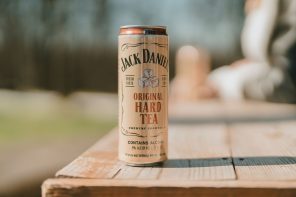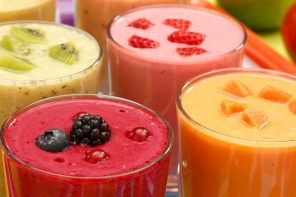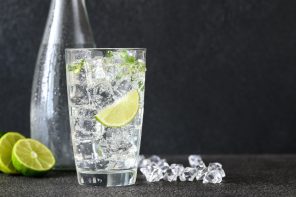In New Zealand, craft spirit producers are experiencing a renaissance. Figures from Nielsen show that craft spirits are experiencing massive growth in the New Zealand market, surpassed only by craft beer in growth over the last five years. Success which has previously been seen only in premium vodka is now being observed across the board, especially in gin.
Overall the craft spirit market showed massive growth – spirits positioned as ‘craft’ accounted for 15 percent of global spirit launches, up from five percent in 2011. Craft producers are responding to a demand for authentic, locally produced and more interesting spirit brands. In the US and Europe, roughly half of consumers are willing to pay more for what they perceive to be premium brands. It is millennials that are driving this growth.
“Millennials are a driving force behind the growth of craft spirits, having taken their ‘creative’ and ‘unique’ ethos into their spirits-buying habits,” said Mintel Global Drinks analyst Jonny Forsyth. “Rather than wanting to affiliate themselves with bigger brands, Millennials often seek to define themselves by more niche, higher quality brands with a quirky backstory; and ideally, they are brands their peers have not even heard of.”
Ben Bonoma runs the Dancing Sands distillery at the top of the South Island along with his wife Sarah. The label was launched in early 2016, which Bonoma believes was the start of the craft gin explosion in New Zealand.
Bonoma believes that craft spirits are following the broader food and beverage trends of people wanting to know more about the provenance, understand the origin of ingredients, traceability, and hear the story behind the makers.
“While there will always be a place for the big brands and those brands who contract distil but do not own their brick and mortar, craft is certainly on trend for the time being.”
Mark Neal and his brother in law had been keeping an eye on the gin scene and noticed a resurgence coming out of Europe, particularly Spain and the UK.
“That was eight years ago, and even now the gin scene in the UK is growing at a ridiculous rate.”
While the overseas explosion of craft gin was fortunate, the pair had been thinking for years about starting their own brand. The result was Scapegrace.
“We noticed that there weren’t many gins that were talking to us – there were too many old English gins, and we wanted something more engaging and inspiring, and that would appeal to our demographic.”
Due to the high price point, craft gins generally appeal to professionals and older drinkers. While there is a genuine appreciation for craft gin in Millennials, Bonoma noted that it tends to be through gifting that Dancing Sands accesses younger demographics. Neal agrees, noting that Scapegrace gin, which normally retails for between $70 and $80, generally appeals to the 28-38 age range.
“People want premium products,” he said. “The resurgence of cocktail culture has also played a part, and people want premium, local ingredients.”
“I think that the huge scope for creating spirits with an individual flavour that you may not have had before is exciting to both the makers and the consumers,” said Antony Michalik, co-founder of the Spirits Workshop, which makes Curiosity Gin. Michalik spent several years living in the USA and saw the trend for craft spirits approaching. He convinced his three business partners to invest in a still in 2015 and started working on it full time one year later. Michalik has gone one step further, creating the Gindulgence Festival to bring craft gins to local consumers.
The popularity of craft gin can be put down to much the same reasons at the popularity of craft beer – variety.
“There are many different styles and variations on the category, so there’s something for everyone to love,” Bonoma explained. The gin makers all noted the increased trend towards local products, with the story selling the product as much as anything else.
“The explosion of distilleries in New Zealand makes this journey more interesting for the consumer and most of the brick and mortar distilleries have cellar doors that customers can visit and learn more,” Bonoma explained. “The journey of exploring new products and distilleries is a lot of fun.”
Neal believes that flavoured gin will be the next trend in gin. Over the past year, the gin category has seen a range of pink gins launched, particularly from big companies like Gordon’s and even supermarket chain Aldi. New Zealand has its own pink gin in Blush, which entered the market in late 2017 with a rhubarb flavoured gin and has since launched a world-first boysenberry gin. However, co-founder Elliot McClymont admits that it was never a trend they intended to get involved in.
“The pink colour wasn’t even intentional,” he said. “We wanted to make an infused gin, and we eventually discovered rhubarb.” The pink gin trend has certainly helped the company, heightening the profile of Blush, even though the association is entirely coincidental.
Although the word ‘gin’ is normally followed by ‘tonic’, the flavour of Blush gins mean that drinkers need to be a bit more discerning in what they use as mixers.
“We generally recommend drinking the boysenberry gin with Fever Tree Mediterranean tonic, which is a bit softer, and the rhubarb with the East Imperial Thai Ginger Ale.”
Between coloured, flavoured and traditionally distilled gins using innumerable local botanicals, Michalik believes that craft gin has a long way yet to go in New Zealand.
“It’s still booming in the UK and Australia and just really starting in the USA – we’re usually a few years behind them. A couple of New Zealand whiskies will be launched in the next couple of years and there are a few new whisky distilleries planned so I think whisky is probably the next wave.”
The popularity of craft gin has not escaped the attention of the big players. Much like craft beer, in which DB and Lion continue to hold 90 percent of the market, with their offerings now including beers from a range of smaller craft producers, large drinks companies are edging into craft spirits. Lion recently purchased craft gin producer Four Pillars in Australia, with the Yarraville-based distillery not going unnoticed with 92 percent growth from 2016 to 2017.






